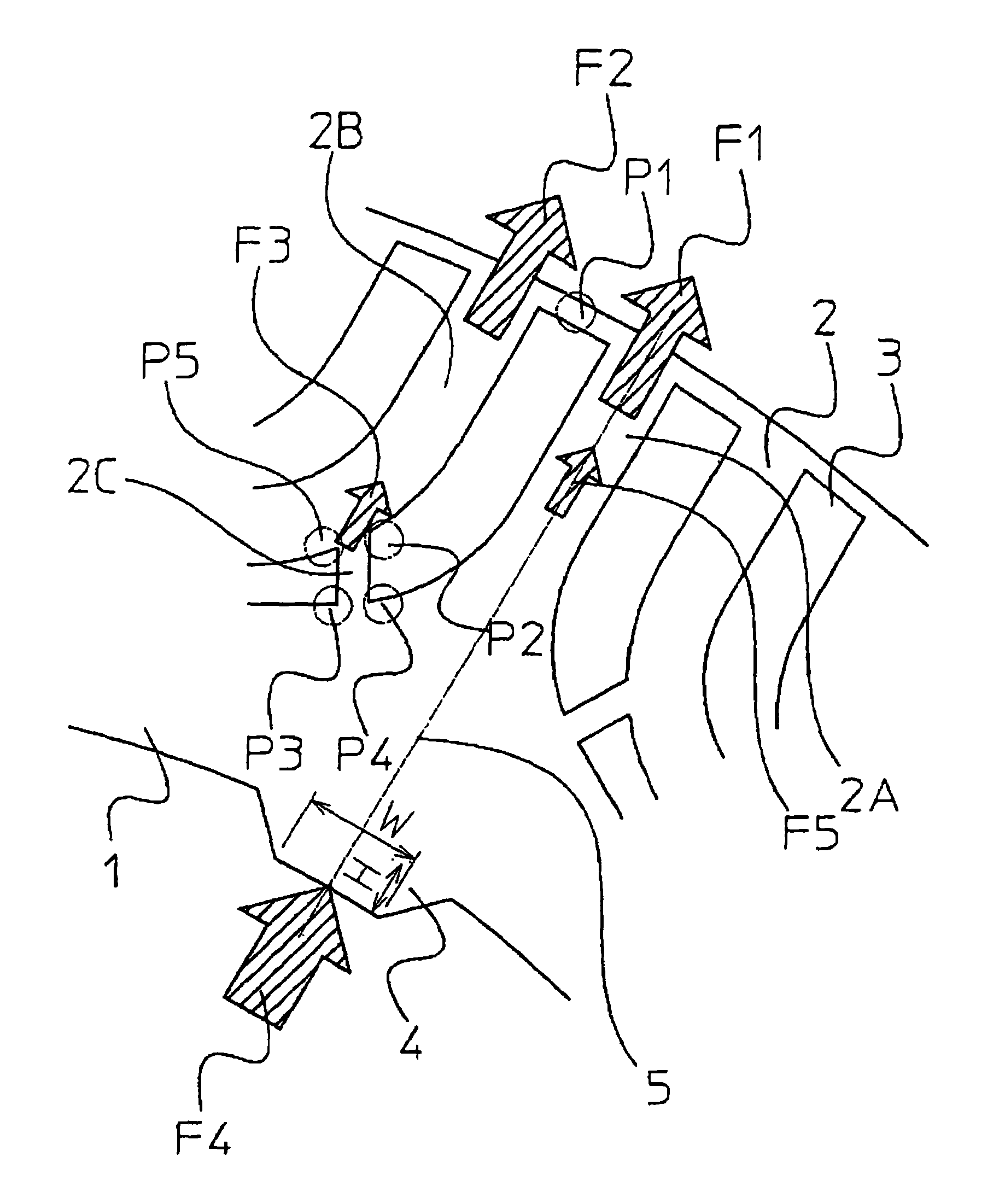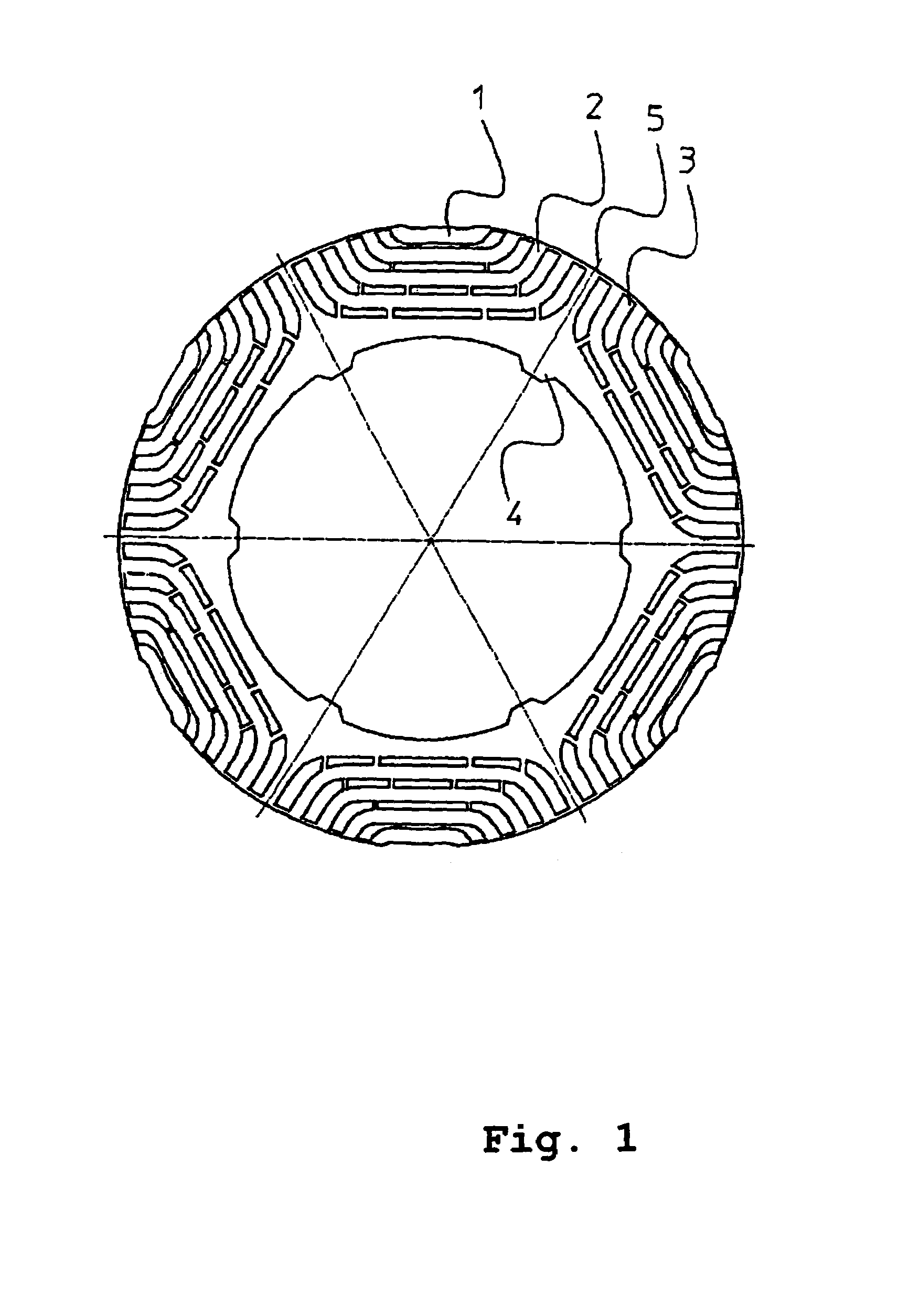Rotor of reluctance motor
a reluctance motor and rotor technology, applied in the direction of synchronous motors, magnetic circuit rotating parts, magnetic circuit shape/form/construction, etc., can solve the problems of unbalanced rotor rotation, difficult to adhere the rotor to the axis, and the inability of humans to manually insert the rotor into the axis, so as to reduce the amount of unbalance of the rotor
- Summary
- Abstract
- Description
- Claims
- Application Information
AI Technical Summary
Benefits of technology
Problems solved by technology
Method used
Image
Examples
Embodiment Construction
[0020]FIG. 1 is a cross-sectional view of a rotor of a reluctance motor of the present invention. FIG. 1 shows a rotor 1, a magnetic path 2, a slit 3, and a projection 4 which is a feature of the present invention. As shown in FIG. 1, in the rotor 1 are provided a plurality of slits 3 that constitute the magnetic path 2 and a magnetic pole center 5. FIG. 2 is an enlarged view of the vicinity of the magnetic pole in FIG. 1. As shown in FIG. 2, each projection 4 is provided in the direction of the radius of each magnetic pole center 5. The projection 4 has a width W of about few mm and a height H of about few μm to a few dozen μm. In FIG. 1 and FIG. 2, although the actual size of the projection 4 is significantly smaller than that of the rotor 1, only the projection 4 is conveniently illustrated to be larger so that the shape thereof can be clearly understood.
[0021]The rotor 1 in which the projections 4 are provided at the positions as described above has an inner circumference (where...
PUM
 Login to View More
Login to View More Abstract
Description
Claims
Application Information
 Login to View More
Login to View More - R&D
- Intellectual Property
- Life Sciences
- Materials
- Tech Scout
- Unparalleled Data Quality
- Higher Quality Content
- 60% Fewer Hallucinations
Browse by: Latest US Patents, China's latest patents, Technical Efficacy Thesaurus, Application Domain, Technology Topic, Popular Technical Reports.
© 2025 PatSnap. All rights reserved.Legal|Privacy policy|Modern Slavery Act Transparency Statement|Sitemap|About US| Contact US: help@patsnap.com



